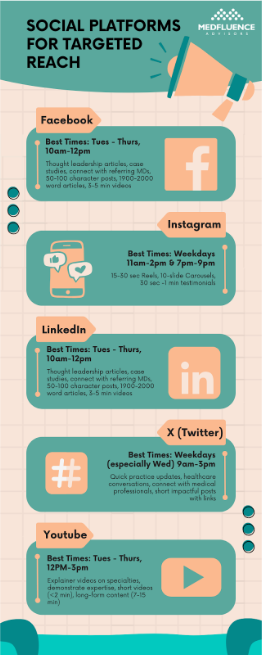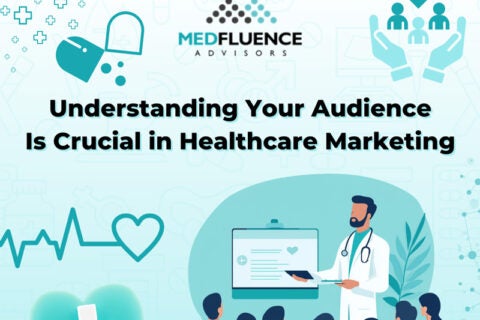Find Undiagnosed Patients: Your Content Strategy Roadmap
In the age of information overload, even the most cutting-edge medical practices can struggle to stand out from the crowd. When your goal is to reach the often overlooked population of patients with undiagnosed or latent diseases, generic marketing strategies simply won’t cut it. The challenge feels familiar: frustrated patients seeking answers, dedicated physicians eager to help, and a marketing disconnect in between.
The good news? The shift in marketing dynamics actually works in your favor. Patients are more proactive in their healthcare than ever before. A recent study showed that 8 out of 10 internet users have searched for health-related information online. This means potential patients are actively seeking solutions – your practice just needs to be the one they find.
This requires a strategic approach. It’s no longer about blasting out as much content as possible, but rather, offering genuinely valuable insights that speak directly to the needs and pain points of your ideal patient.

Understanding Your Ideal Patient
Connecting with patients who are still searching for a diagnosis requires a deep understanding of who they are and how they navigate the healthcare landscape. Think of it like a puzzle – the clearer your picture of the final image, the easier it is to find and place the right pieces. Here’s how to define your target patient profile:
-
Demographics Matter
- Age: Younger patients (especially millennials and Gen Z) are more likely to be digitally savvy, seeking answers online and through social media. Older patients might still prefer traditional channels like doctor referrals and print media. This influences both the type of content you create and the platforms you use to share it.
- Gender: Certain conditions are more prevalent in men or women. For example, autoimmune diseases disproportionately affect women. Gender can even play a role in how symptoms are perceived and described, which impacts the search terms a patient might use.
- Location: Is your practice in a rural area with limited specialists? Or in a major city with many competing healthcare systems? Location impacts access to care and may even influence the types of conditions you see most often.
- Socioeconomic Status: Limited financial resources or lack of insurance can create significant barriers to diagnosis. Understanding these challenges helps you tailor your content to be accessible and address real-world concerns patients may have about costs and treatment options.
-
Disease Focus: Finding Your Niche
- Specialization is Key: Are you known for minimally invasive treatments for chronic pain? Cutting-edge diagnostics for rare disorders? Be laser-focused about the conditions you treat best. This attracts the patients you’re truly positioned to help.
- Symptoms, Not Just Diagnoses: Many patients don’t have a diagnosis yet, so they search based on what they ARE experiencing. Focus on keywords and content that address common symptoms of the conditions you treat, which can guide patients toward your practice.
-
Online Behavior: Where to Find Them
- Social Media Savvy: Identify the platforms most frequented by your target audience. Facebook groups dedicated to specific conditions, Instagram accounts sharing patient journeys, even relevant subreddits can be valuable sources of insight.
- Search Engine Sleuths: 89% of patients turn to Google (or similar) to research their health concerns. Understand the keywords they’re likely to use. Tools like Google Keyword Planner or SEMrush can provide valuable insights into search volumes and common phrases.
- Beyond the Obvious: Think about the broader online ecosystem your ideal patients inhabit. Do they follow wellness blogs? Read niche medical publications? Partnering with relevant websites or influencers expands your reach.
Why does this matter?
Tailored content isn’t just about using the right hashtags; it’s about speaking the language of your ideal patient. Imagine two patients seeking help for fatigue. One might respond to an infographic about the causes of chronic fatigue syndrome, while another needs a personal story highlighting the life-changing benefits of sleep apnea treatment.
By knowing your audience intimately, you create content that feels less like marketing and more like a much-needed solution. The more granular your ideal patient profile, the more effective your content strategy becomes. Here’s how those puzzle pieces pay off:
- Speak directly to their pain points and anxieties. For example, a blog post targeting young adults with undiagnosed conditions might focus on regaining a sense of normalcy. Addressing their social and emotional needs resonates beyond just medical facts.
- Knowing where patients spend their time online ensures your content is seen by the right people, maximizing the impact of your efforts.
- Understanding the challenges undiagnosed patients face helps you create content that feels helpful, not salesy. This builds the trust needed to turn someone browsing the web into a patient walking through your door.
Your ideal patient profile is a living document – refine it based on data and real-world interactions. The better you know those you serve, the stronger your content strategy will become.

Content Types for Patient Connection
Patients with undiagnosed conditions often feel lost and isolated. Traditional medical information can be intimidating and difficult to understand. Your content should strive to be an antidote to this – offering clarity, reassurance, and a sense of partnership on their journey toward diagnosis and treatment. The best patient outreach isn’t a sales pitch, it’s a bridge of understanding. These content types foster that connection:
Educational Content
Combat the fear and confusion that often surrounds undiagnosed conditions.
- Blogs: Avoid jargon and overly technical terms. Explain complex concepts using analogies and plain language with real-world examples. Think of yourself as translating medical-speak into terms a friend could easily understand. Address the emotional side of being undiagnosed. Blogs on topics like coping with uncertainty, self-advocacy, and finding support groups offer practical and emotional value.
- Infographics: Visualize statistics, treatment processes, or symptom checklists for easy understanding. Patients are likely to share infographics on social media, especially those that offer relatable symptom checklists or surprising statistics. This organically expands your reach.
- Short Videos: Explainers on conditions, procedures, and frequently asked questions establish your practice as a knowledge hub. Don’t try to cover everything in one video. Focus on specific conditions, procedures, or common patient anxieties. This allows for more in-depth information in bite-sized chunks.
Patient Testimonials

Undiagnosed patients face a unique set of challenges: confusion, frustration, and often a sense of being dismissed by the medical system. Patient testimonials offer something that even the best educational content can’t – the emotional proof that diagnosis and successful treatment are possible. Nothing demonstrates the transformative power of your care like the voices of your patients.
- Videos: Seeing someone who’s relatable share their journey builds trust and offers hope. A polished, scripted testimonial comes off as less genuine. Let the patient tell their story in their own words, even if it’s a bit rambling. This honesty is what resonates. If possible, show the patient engaging in activities they couldn’t do before treatment. This underscores the life-changing benefits without having to say it directly. Aim for 2-3 minutes for maximum engagement. Longer testimonials can be broken into chapters focusing on specific aspects of their journey.
- Written format: Detailed, personal stories on your website or blog allow potential patients to see themselves reflected in the experience.Encourage patients to share their experiences beyond just the end result. Have them describe their struggles before diagnosis, their experience with your practice, and their life now. Have a dedicated page for testimonials, and feature them prominently on condition-specific landing pages as well.
Physician Spotlights
Patients seeking cutting-edge treatments or help with elusive diagnoses crave more than just a list of credentials. They want to know there’s a compassionate, dedicated doctor behind the impressive resume. Let your medical expertise and genuine compassion shine through.
- Q&A videos: Address common concerns and showcase your approachable bedside manner. Focus on questions potential patients are likely to have about their condition, treatment options, and your approach to care. This offers valuable insights while demonstrating your knowledge. How you answer a question is just as important as the answer itself. Convey a reassuring, non-judgmental tone, addressing fears as directly as facts.
- Interviews: Highlight a physician’s specialization and experience – perfect for blogs or local news features. Share a physician’s passion for their field, what drew them to their specialty, or a career turning point that deepened their commitment to patient care. These personal stories build trust. Tailor interview questions to align with the conditions and procedures your practice specializes in.
Medical accuracy is non-negotiable. Partnering with specialists in your field ensures your content is as informative as it is engaging. A large number of patients consider the trustworthiness of a health information source as its most important attribute.
Social Platforms for Targeted Reach
Social media can feel like shouting into the void – especially when you want to reach patients often overlooked by traditional marketing. The good news is, with a targeted strategy, the right platforms can be like a direct line to those seeking the care you provide. Here’s a breakdown:
Prioritize joining patient support groups related to your specialty. Leverage the power of targeted advertising, not just to shout about your services, but to share stories that resonate with your target audience. While longer-form videos can work, aim for a sweet spot of 2-5 minutes to maximize viewership. For text posts, keep them concise. Studies suggest posts around 40-80 characters get the most engagement. Think of it as a conversation, not a billboard.
Best Times to Post: Weekdays between 12 pm – 3 pm seem to offer the most visibility. Experiment with Tuesdays, Wednesdays, and Thursdays, as engagement tends to taper off later in the week.
This is a visually driven platform. Reels in the 15 to 30-second range tend to maintain viewer interest. Carousels of up to 10 slides are effective, but ensure the first two slides have strong hooks to capture attention. Keep video testimonials concise and impactful, aiming for 30 seconds to 1 minute.
Best Times to Post: Aim for 11 am – 2 pm on weekdays, as well as later in the evening (7 pm – 9 pm). Instagram users often scroll during lunch breaks and after dinner.
Here’s where you can build your authority and connect. This is your hub for thought leadership articles, insightful case studies, and connecting with referring physicians. Text posts should be short and informative, around 50-100 characters. Articles offer an opportunity for in-depth expertise with pieces in the 1900-2000 word range. Videos perform best in the 3-5 minute range. LinkedIn is the place to solidify your reputation within the professional medical community.
Best Times to Post: Focus on mid-week (Tuesday – Thursday) between 10 am – 12 pm. This is when professionals are often checking in on LinkedIn.
X/Twitter
X, formerly known as Twitter, can be useful for sharing quick updates on your practice, engaging in relevant healthcare conversations, and connecting with healthcare professionals. Character limits still matter on Twitter. Keep your updates short and impactful, offering links to drive viewers to more detailed information. Remember that Twitter’s audience skews slightly more towards industry insiders than patients but still offers valuable networking opportunities.
Best Times to Post: Target weekdays (especially Wednesdays) around 9 am – 3 pm for the most engagement potential.
YouTube
YouTube is a more resource-intensive platform but can be invaluable for patients seeking an in-depth understanding of their condition. Create explainer videos featuring your specialities, demonstrating both your expertise and your personable approach. Short explainer videos should be kept under 2 minutes, while longer-form content can be 7-15 minutes.
Best Times to Post: Thursdays and Fridays at around 12 pm – 3 pm tend to see the most viewership on YouTube.

Timing Matters: Consistency, Peak Engagement, and Analytics
Remember, consistency is key. Even more important than hitting the absolute ‘perfect’ time is posting regularly. Each platform has its own rhythm and peak engagement times can shift, so it’s crucial to stay on top of analytics. Most platforms have built-in tools that reveal when your audience is most active. This data empowers you to continuously adjust your schedule for maximum reach.
A compelling caption in the first few lines is just as important as a stunning image, even on visually focused platforms. It’s what compels your audience to stop scrolling and engage.
The Power of Your Content
Reaching the right patients online can feel overwhelming, especially when you’re passionate about providing life-changing care. Remember, patients with overlooked conditions are often searching just as hard for answers as you are to connect with them. By creating content that speaks to their needs and sharing it strategically, you become the guiding light they’ve been looking for.
Do you want to know how to make your content shine even brighter? Check out our resource library for more helpful insights or reach out today. We’re here to help you make a real difference in the lives of those who need you most.


